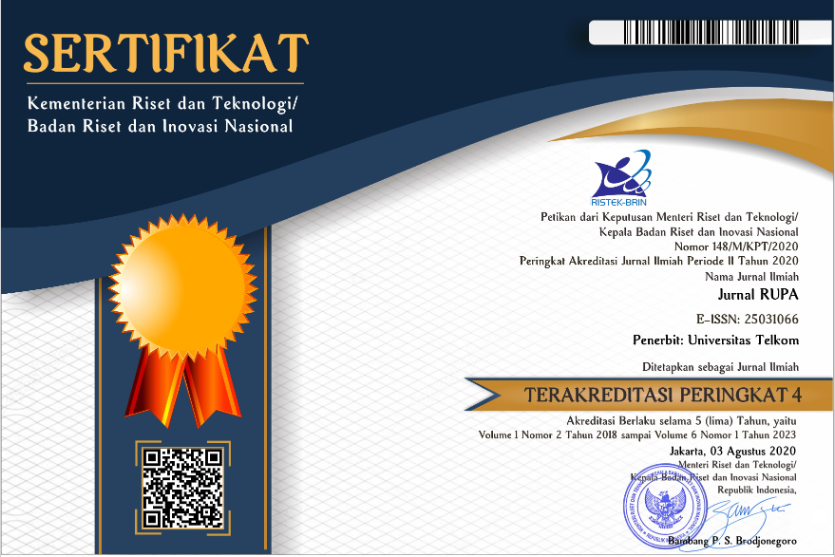Analisis Gaya Busana Kerja Muslimah, Studi Kasus: Pekerjaan Sektor Formal di Kota Jakarta
Abstract
The dynamics of modern urban life required society to communicate and deliver the ideas properly. Through Fashion Communication, one could deliver many ideas to others, nice outfit with proper appearance tend to make someone more trustworthy, respected, and accepted by society. Today many female Moslem (Muslimah) workers in Capital City of Jakarta, Indonesia, presenting their Moslem identity at their work place by wearing hijab (scarfs) in fashionable way as the trend of “Hijaber Community†(initiated by Dian Pelangi and friends) become booming in the last five years. The trend comes together with an increase of female employees (Moslem and non-Moslem) in a number of formal sector areas in Indonesia (ILO-Asian Decent Work Decade: Indonesia, 2006-2015). This paper aims to identify Modern Style of Muslimah Work Clothing which popular today in Jakarta, the analysis based on user preferences. Method of this research is quantitative-descriptive by distributing questionnaires to some respondents (users) of Muslimah workers in formal sector employments. Results of this analysis indicate three aspects: Fashion Style, Visual Aesthetic, and Consumer Behaviour. The fashion style of modern Muslimah work clothing is Semi formal type with Feminine-Casual characteristic. The visual aesthetic aspects are (1) Colors: Dark and soft colors; (2) Texture: Geometric pattern and Sulur. Consumer behavior of respodents is normal with economical consideration in group of Early Majority and Early Adopter.








